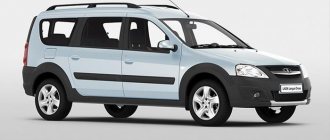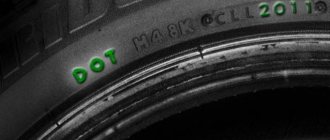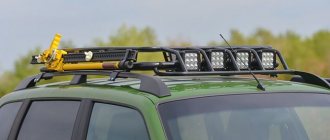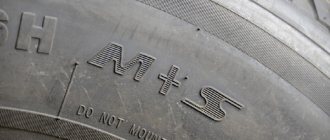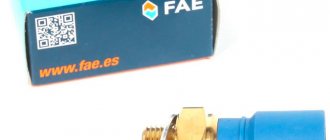Types of summer tires
Summer tires in hot weather provide:
- Reliable grip on the road surface.
- Good ride quality.
- Quick response to turns, braking and other maneuvers.
Types of summer tires:
- Road tires are designed for driving on asphalt. They provide comfortable movement, do not make noise, and have reliable grip on a flat, dry surface.
- All-season tires are suitable for southern regions with warm winters.
- Sports tires are made of hard materials that provide strong grip on the road, but do not absorb bumps and bumps. They are chosen by supporters of high speeds and aggressive driving style.
Driving comfort depends on the patterns applied to the treads:
- Symmetrical non-directional ones are suitable for supporters of a quiet, comfortable ride.
- Asymmetrical non-directional ones provide opportunities for a sporty style of movement and can withstand heavy loads.
- The symmetrical directional tires remove water on wet roads and have strong grip on dry roads. Most often they are installed on sports cars.
- Asymmetrical directional ones are installed in the direction of travel of the wheel. They are chosen by fans of racing and risky maneuvers on high-speed tracks.
Car tire markings
You can distinguish summer tires by the tread pattern. In winter species it is deeper and more pronounced. Other characteristics can be deciphered by the symbols printed on it.
The main numbers indicate the dimensions. For example, the 205/60R16 marking indicates that this is a radial tire with:
- Profile width - 205 mm.
- The ratio of the profile height to its width is 60%.
- The seat diameter or rim diameter is 16 inches.
Motorists pay special attention to the following markings:
- Load index - permissible long-term load on 1 tire.
- Maximum pressure.
- The directions of wheel movement are the inscription Rotation with an arrow.
- Internal (Inside) and external (Outside) parts. It is important to take them into account when mounting a tire on a rim.
- Speed index - the maximum permissible value at which it is safe to drive on these tires.
The meaning of tire markings
All tires are marked according to an established standard, which allows you to assemble the required set of tires.
Modern tubeless tires contain a radial cord and are designated by the symbol R or RADIAL.
The alphanumeric designation 215/55 R16 91 V is deciphered as follows:
- 215 - indicates the external width of the profile in mm;
- 55 - external profile height as a percentage of its width; if there is no value, this parameter is equal to 100%; if the value is less than 50, then the tire is considered low-profile;
- R - radial cord (diagonal - D);
- 16 — wheel diameter in inches;
- 91 - load capacity index, corresponds to 670 kg;
- V is the maximum speed index, corresponding to 240 km/h.
| Index | Speed, km/h | Index | Speed, km/h | Index | Speed, km/h |
| B | 50 | L | 120 | T | 190 |
| C | 60 | M | 130 | U | 200 |
| D | 65 | N | 140 | H | 210 |
| E | 70 | P | 150 | V | 240 |
| F | 80 | Q | 160 | W | 270 |
| G | 90 | R | 170 | Y | 300 |
| K | 110 | S | 180 |
The vehicle manual indicates the tire markings recommended by the manufacturer.
Reliable summer tire manufacturers
Summer tires from Russian and foreign manufacturers are presented on the domestic market:
- Kama is a Russian manufacturer of rubber for cars, trucks and special equipment. Its tires are durable and quiet, and do not affect excessive fuel consumption. KAMA TIRES is a brand with a 45-year history. Today, its 11 enterprises produce 370 product items.
- Cordiant is a Russian brand created in 2002. The holding produces up to 7.5 million tires per year of different sizes for trucks and passenger vehicles. The advantages of the products are ease of operation, reliability and safety, and comfort when driving.
- Michelin is a French company whose first plant began operating in 1889. Its tires are used by participants in Formula 1 auto racing.
- Tigar is a company specializing in inexpensive summer tires for city roads. Its tires are silent, economical, and stable on any surface. The company is owned by Michelin.
- Continental is a German manufacturer whose first plant was opened in 1871 in Hannover. The product is characterized by controllability and good adhesion to the canvas. It is calculated that these tires have the shortest braking distance.
- Bridgestone is a Japanese company founded in 1931 in Kurume. The products have high braking capabilities on wet surfaces and durability.
- Toyo Tire & Rubber Co., Ltd. - Japanese manufacturer from Osaka. Produces mid-priced products. They provide confident movement on asphalt and soil, in mud and muddy roads. Sports models allow acceleration up to 190 km/h.
Criteria for choosing summer tires for a car
When choosing tires for the summer, motorists look for ones that are suitable in design, size, tread type, and cost:
- Standard size - geometric indicators of the landing diameter, height and width. The manufacturer enters this data into the model description and stamps it on the gas tank flap or the end of the car door.
- The tread geometry is chosen depending on the climate, road conditions, and driving style. The V-shaped directional pattern copes with hydroplaning and is suitable for rainy areas. A symmetrical non-directional pattern is chosen by supporters of a quiet ride. The asymmetrical pattern is not afraid of bad roads and weather changes.
- Reinforced sidewalls withstand bumps and are suitable for driving on poor roads and rough terrain. They save tires from punctures when hitting sharp rocks.
- Technical recommendations for maximum speed and maximum load, applied by the manufacturer to the tread, should be taken into account by fans of aggressive driving.
- The noise level can be determined in practice or collected information from sellers and car owners.
- The cost of domestic products is lower than imported ones with similar characteristics.
- Economy is an indicator of how a tire affects fuel consumption.
With proper consideration of technical parameters, terrain features and driving style, tires will serve reliably until they wear out completely.
The best summer tires owner reviews, test, description, rating
We present to your attention the rating of the best summer tires according to users of our site. Reviews of summer tires can be viewed by selecting the desired model below, where you will also find a test of summer tires, a link to information about how the testing was carried out, and a video review of the tire.
Also, you can look at other sections on our website: Bridgestone tires summer reviews, Nokian summer tires reviews, Continental tires summer reviews, Michelin, Kumho, Amtel.
The rating of summer tires is calculated based on the reviews and ratings left about them; we take the arithmetic average.
The best summer tires, rated:
We have the latest reviews about summer tires available on our website.
At the moment, unfortunately, the list of summer tires is not complete. We are constantly working to expand our database. Don't be upset if you can't find the tire you need, use this form to add the tire you need.
Results of independent tests of summer tires
We do not test summer tires, so we provide information from other independent sources: magazines, YouTube channels, websites. A link to the original source is available next to each test.
Big test of summer tires in size 195/65 R15, “Behind the Wheel” 2018
More details about the test, as well as how the testing was carried out, can be found here
Test of summer tires 195/65 R15, Autocentre.ua 2020.
More details about the test, as well as how the testing was carried out, can be found here
Big test of summer tires 195/65 R15, “Behind the Wheel”, 2017
More details about the test, as well as how the testing was carried out, can be found here
Test of summer tires 185/60 R14, Autocentre.ua 2012.
More details about the test, as well as how the testing was carried out, can be found here
Test of summer tires 195/65 R15, “Behind the wheel - Sergey Mishin”, 2016.
More details about the test, as well as how the testing was carried out, can be found here
Reviews about summer tires
oshinax.com
Where is the best place to buy summer tires for cars?
Summer tires are offered by retail auto sales and online stores. 80% of buyers turn to the Internet to collect information about models. 10% of all transactions occur online.
Based on the results of last year, the following online stores were named the leaders in tire sales:
- "Free Wheels";
- "Wheel";
- Allrad;
- SA.Ru;
- "Mosavtoshina" and others.
Recommendations for selection
The main advice for motorists when choosing summer tires is to find an option that suits your driving style, the characteristics of the roads and the climate of the area where the car is driven.
The average life of a tire is 5 years. It is worth buying products released during this period, because... Over time, their performance indicators decrease. The labeling contains indications of the country of manufacture and the date of manufacture of the product. It consists of 4 digits. For example, 3919 means the item was produced in week 39 of 2019.
Additional manufacturer hints can be read in the marking symbols:
- A snowflake means winter tires, an umbrella means driving on water-filled asphalt. The Allseason inscription gives permission for all-season operation, Aw allows driving in any weather.
- Tubeless is a tubeless tire, Tube Type is a tube tire.
- Temperature A indicates the temperature resistance class of rubber when driving at high speeds. Of the 3 classes, A, B, C, class A is the best.
- Traction - braking on wet roads. Of the 3 classes, A, B, C, the best is class A.
- The place where the TWI inscription is located, or the image of a triangle, shows the area where the degree of wear of the rubber should be assessed.
- Reinforced or RF means reinforced type.
Tires are produced in wide and narrow profiles. Wide ones are designed for high-speed driving, narrow ones for quiet driving.
A low profile has the lowest tire height from tread to sidewall. This provides reliable grip on the road, but provides poor shock absorption from unevenness and bumps in the road surface.
A similar choice is between supporters of hard and soft tires. The hard one does not absorb shocks, but is stable on the road. On a soft slope the movement is comfortable, it absorbs impacts well.
Question answer
Alexander, 48 years old, Aktyubinsk: Broken tires on both right wheels. Can I buy only 2 tires rather than a full set?
According to traffic rules, tires of different degrees of wear cannot be installed on the same axle. You can install old tires on the front axle and new ones on the rear wheels. Old tires on the front wheels do not greatly affect the stability of the car. And on the rear axle, tread wear leads to skidding and uncontrollability on wet roads. All tires must have the same tread pattern.
Getting ready for the warm season and choosing summer tires
But first, let’s see what the legislation tells us on this topic. So, if we are talking about passenger summer tires, then the “Technical Regulations on the Safety of Wheeled Vehicles” (TRTS) prohibits the use of tires with a residual tread height of less than 1.6 mm. For tires intended for winter conditions, the standard is more strict: 4 mm.
It’s easy to check: you can use a regular ruler or caliper, or you can use special wear marks, which are found on almost every modern tire. They are usually marked on the sidewall with the TWI index or applied directly to the tread elements as a percentage of the remaining depth. That is, if you see the number 40, then you don’t have to think about replacement due to wear.
If 20 percent remains, it’s time to worry about changing tires. There are other indicators of tread wear, but in any case, the law obliges tire manufacturers to install a sufficient number of clearly visible marks. If you have doubts about your own measurement skills, it is better to entrust this to specialists from tire centers.
To be fair, let’s say that it’s not worth bringing your tires to the maximum possible tread level. It is much easier to puncture such a tire or damage it during an impact than a new one or with little wear. Moreover, the more wear, the higher the likelihood of loss of control, especially on wet roads.
But even with minimal wear, the tires should not have holes, bulges, cuts or tread separations. These tires also go to waste. The presence of foreign inclusions - nails, screws, etc. - is not allowed.
There is one more important point. Some manufacturers believe that the maximum service life of tires should not exceed five years, although a number of them advocate 10 years of service from the date of issue. However, when they talk about 5 years, most likely, we are talking about the warranty period for the tire service.
Nevertheless, it is still worth paying attention to the age of the tires. The fact is that the rubber mixture from which they are made is a multicomponent substance that is susceptible to drying out. Unfortunately, this is not a school rubber eraser that can be revived by soaking it in kerosene or gasoline. A dry tire does not hold the road well, wears out faster, and microcracks that appear during an impact can lead to its deformation or rupture.
So which tires should you choose if you are convinced that the old ones are worn out? First of all, they are suitable for your car in terms of size, load index and speed. Most likely, there will be several possible options, and all of them are indicated both on the sticker of the central pillar of the doorway on the driver's side of the car, and in the car's operating manual. In general, TRTS stipulates that vehicles must be equipped with tires in accordance with the vehicle manufacturers' operational documentation. And it is better not to deviate from these recommendations.
The tire size is tied to the wheels you have, and with a seat diameter of 16 inches, it will not be possible to install 17-inch tires. There is one more rule: the smaller the wheel diameter, the higher the profile of the tire used.
Often, car owners try to install tires with a lower profile and increased width on their car. Yes, this option sometimes looks better, but it requires a disk of increased diameter and has certain features. The resulting wheel will always be heavier and will cause additional stress on the chassis and suspension. At the same time, there is a risk that when cornering the tire will touch the suspension and body elements.
In addition, when operating a car on bad roads, an inevitable decrease in comfort will follow. So, when driving on surfaces of varying quality, it is better to opt for tires with a higher profile.
The tire market is huge and offers models for every taste and budget. These are European, Korean, American, Chinese and even American brands. Which of them is preferable is, of course, up to the buyer to decide. But there is a nuance.
Every self-respecting brand produces tires both for the domestic market and for export to various countries and regions. The lines of the same Japanese or Finnish manufacturers for themselves or for Russia can be completely different. But this does not mean that they are worse or better.
The fact is that the “right manufacturers” adapt the composition of the rubber mixture to the climatic conditions of a particular region. And sometimes even to the quality of asphalt. So, there is no point in trying to buy tires made conditionally for Spain or the USA, unless we are talking about models for “super premium” (and even then not always). Each line is made for a specific market.
By the way, most of the leading brands have built their factories in Russia, but this is not a reason to say that the quality of the products is different from imported ones. The standards at such enterprises are the same all over the world, and accordingly, quality control is identical. What may be concerning is the degree of localization of production or the use of local materials and components for the manufacture of tires.
As a rule, we are not talking about rubbers, but about tire carcass materials. The same textile cord or wire for bead rings may be locally produced. But they definitely meet all brand standards, so there’s no need to worry about it.
By the way, in 2020, the Michelin X-Ice North 4 DOT 22 WC 0K1X 0218 tire took first place in a joint test of winter studded and non-studded tires (12 studded and 11 non-studded, 205/55R16), conducted by the famous Finnish company Test World Oy. place. Moreover, what I would especially like to note is that this tire was produced in Russia.
Another thing is that some tire manufacturers have several price lines, from budget to premium. The difference is not only in price, but also in the loads that these tires can withstand, road stability, frame materials and rubber compound composition, as well as in the mileage before wear. We are talking about mileage, and not about the time of use, which we have already mentioned. Yes, as a rule, an expensive tire requires less weight for balancing, that is, it is better dynamically adjusted.
Another point that is often forgotten is the tread design of the tire itself. By the way, it is a product of the company’s intellectual property, is protected by law and is included in the price of the tire. Of course, the pattern affects the adhesion properties in various conditions, but it is worth considering that a simpler one may be much more effective.
It all depends on what roads you will drive on. It’s probably not worth buying a high-speed tire with symbolic lugs, knowing that every weekend before the start of winter you will go to the countryside.
Also choose premium tires for an inexpensive car with an engine power of up to 100 hp. hardly makes sense. There is no particular benefit here if the owner drives 50-60 thousand kilometers in five years. After all, the service life is approximately the same.
But if the annual mileage is higher, then you can think about a higher price range: such tires, with certain characteristics, will cover a greater number of kilometers. In this case, the costs may be worth it.
In any case, it is worth looking at the results of tire tests in authoritative, specialized media, preferably domestic ones. Moreover, testing tires of exactly the required size. And at the same time, monitor the reviews of the owners. But all this will not be dogma.
For example, the tire receives the highest scores for smoothness, low noise, and reduced fuel consumption. At the same time, it does not perform well in high-speed maneuvering. But the total score allows her to lead.
At the same time, a model with good braking or handling characteristics on wet surfaces may end up at the bottom of the list due to the same noise or increased fuel consumption. If 100 g/100 km or a couple of extra decibels are important, choose according to this criterion. But such a decision will force you to pay more. In general, it is best to choose your priority tire properties and base your purchase on them.
Having decided on these details, you can move on to the nuances. The tire tread pattern can be asymmetrical or directional. In the first case, the tire is always installed with the side marked Outside facing out. The fact is that the inward side of the tread not only differs in design from the outer side, but is also softer in itself, since the inner side of the tread experiences different loads than the outer side, especially in corners.
In the second, the Rotation marking and the arrow indicating the direction of tire rotation are important. Such models have proven themselves well on wet surfaces, but wear out faster. In addition, problems arise when rearranging such tires. It is not possible to change the mounting side of the tire without reseating. There are also very rare options when the tread is non-directional and at the same time symmetrical. But these days practically do not occur.
So when should you do all this? Let us return again to the legislation of the countries of the Customs Union. The technical regulations read: “The operation of vehicles equipped with tires with anti-skid studs is prohibited in the summer (June, July, August).” It is prohibited to drive on summer tires during all three winter months. But these deadlines can be adjusted by regional government authorities of the member states of the Customs Union due to the numerous climatic zones.
Therefore, the Tire Manufacturers Association makes the following recommendation. Change your car after the winter season only when the average daily temperature is above +7 degrees for 7-10 days in a row.
Comment from a specialist from the company “SHINSERVICE”
Alexander Golubev
expert "SHINSERVICE"
In principle, there are no ideal tires in all respects. For some car enthusiasts, the main criterion for choosing tires may be their price, for others - mileage, others are focused on the braking properties of the tire, and for others it is important to equip their car with tires from the most prestigious brands, regardless of their price.
The hardest thing, perhaps, is for those car enthusiasts who want to purchase tires with the highest possible performance characteristics from the most prestigious brands at the lowest price.
Therefore, giving universal recommendations for all car enthusiasts on the choice of tires, based on individual factors, is a thankless task. We advise car enthusiasts to determine for themselves which properties and characteristics of a tire are most important for them and which are secondary.
And having already decided on this, feel free to go buy tires. It is always easier for tire center specialists to select models that meet the needs of the car owner when he clearly understands what kind of return he wants from tires.
